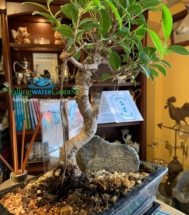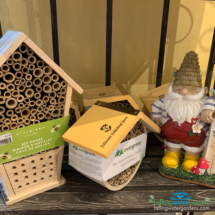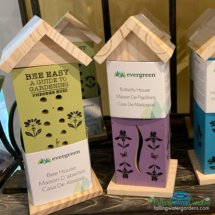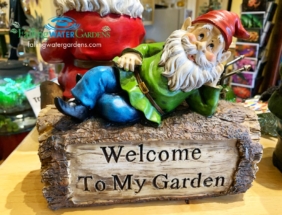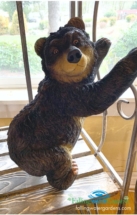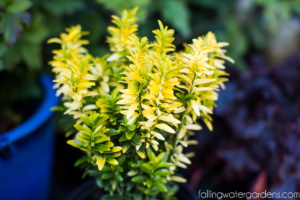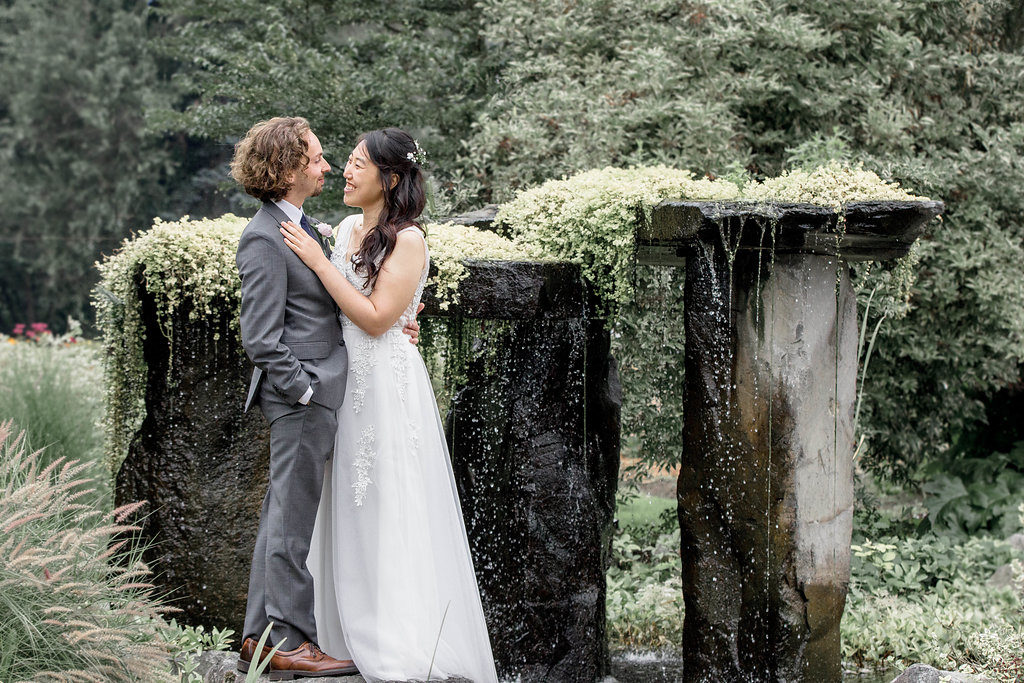Welcome to March at Falling Water Designs
We have come into a new spring and we are excited about what is in store for everyone’s gardens this year! In this issue, you will find what is happening around our nursery, as well as all things Mason Bees, the featured plant for March and so much more!

Our March 2021 Issue
Around the Nursery
Time to brush away the winter debris and rise and shine! Like you, we are busily working on preparing our nursery for the 2021 season. With our tasks for our own pond maintenance, but we are also updating our landscapes to inspire your own renovations, as well as our event spaces. AND our inventory is growing by the minute!
In this issue, you will find your garden tasks for March, important information about Koi and Gold Fish, a featured article about Mason Bees, this month’s plant spotlight, featured items in our gift shop, and finally a special update from our new Event Coordinator!
We are looking forward to seeing you this Spring!
To navigate our newsletter, you will now click the article titles on the side.
Featured Koi of the Month
Kōhaku
The Kōhaku is an ornamental koi, and quite the regal fish. It has a white body with an orange-red markings across parts of the body. There stunning fish has simplicity in their markings that demonstrate a sense of harmonious balance.
Commonly considered one of the ‘Big Three’ varieties of Koi, along with the Showa and Sanke. Believed to be one of the first ornamental carp varieties developed in approximately 1888. Kōhaku is considered to be one of the most popular breeds.
Common Questions: When To Feed Your Koi
Water Temperature & Fish Hibernation:
Fish are cold-blooded animals:
When do I feed?
Plant Spotlight
This month we are featuring the Water Hawthorn, Unicorn Varigata and the Euonymous Japonicus ‘Happiness’ plants.
 Aponogeton Distachyos – Water Hawthorn
Aponogeton Distachyos – Water Hawthorn
Water Hawthorn is known for its strange white flowers, spotted with black pollen and strong vanilla fragrance. Its oblong leaves will rest on the water surface, as this unique plant prefers cooler waters, often blooming in the Spring and Fall, while going dormant in the Summer.
Care & Planting
Water hawthorn is quite easy to maintain. You will want to plant your Water Hawthorn in a sunny area near the margins of your pond, very little maintenance is required. To increase the rate of growth, you may fertilize water hawthorn while it is actively growing on a monthly basis. You will want to stop ferritization when the plant has gone dormant.
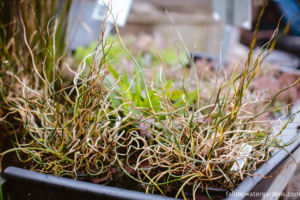 Juncus Effusus ‘Unicorn Variegata’
Juncus Effusus ‘Unicorn Variegata’
This plant grows easily in moist to wet soils, and in areas that have full sun to part shade. Though, will thrive best in full sun. Foliage remains evergreen in warm winter climates or when grown indoors as a houseplant.
Care & Planting
You will want to plant in an area that is part sun and part shade, and an area that has wet-average soil conditions. Performs well in standing water to 4” deep, but will also grow well in garden soils as long as the soils are in fact kept consistently moist. Plants will spread in the landscape by rhizomes and by self-seeding. Rhizomatous spread may be controlled, if desired, by growing this plant in large containers sunk in the ground. Consider cutting back old foliage in early spring.
Euonymous Japonicus ‘Happiness’
Bring some happiness to your yard this year and plant the Euonymous Happiness.
Euonymus japonicus ‘Happiness’ is a relatively dwarf evergreen and special feature is its joyful and sunny bright foliage.
The new growth is pale green then fading to pale yellow and maturing to a rich golden yellow before; the foliage color makes a colorful contrast with the stems which remain green. Eventually the foliage turns dark green, creating the ideal background against which the bright new foliage is shown off.
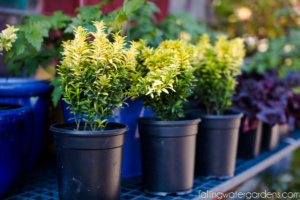 Care & Planting
Care & Planting
Care: Best to prune in the summertime after the
Planting: It is best to plant your ‘Happiness’ in a sunny or semi-shaded area, and is suitable for any type of soil.
Stop by the nursery to browse our ever-expanding plants available for purchase.
Garden Tasks for March
It is now time to don those gardening gloves and get your garden prepared for planting and blooming!
TASK 1: Clearing
It is a great time to move away debris, as well as clear dead steams, because this is our last opportunity to do so before new growth. You see, if you have new growth, it makes it challenging to know what to trim back.
Task 2: Dividing
Take a look around your garden and see what you can possibly divide and plant. If you see areas of congested plants like iris’ or geraniums, actually anything with lots of stems, you can divide. Dividing and replanting allows you to decrease overall garden congestion, see what areas need to be filled in with complimentary plants or areas that need complete replacement and support.
Task 3: Early Planting
If you have areas within your garden for edible plants/crops, it is now a good time to commence early planting of permanent crops like asparagus and strawberries, but also for those early plantings of crops of shallots, potatoes and onions.
Task 4: Pond Cleaning & Scheduling Maintenance
If you do not have fish in your pond, you may commence cleaning your pond during this month. However if you do have fish in your pond wait until the water temperature is at a consistent 50° degrees – which is more consistent with April.
If you are a DYI person, you may visit our nursery to purchase your pond supplies. We have a great article on Spring Pond Maintenance and check out this great video on how to clean your pond.
If you have fish, call us to get on our schedule your pond cleanings in April. To schedule your maintenance give us a call (360) 863-1400.
Task 5: Stop by the Falling Water Gardens Nursery
Now that you have taken an inventory of plants, garden décor, and garden and pond supplies, you can be sure to stop by our Nursery and Giftshop to acquire what you need.
The Importance of Mason Bees
 To bee or not to bee, that is our question. While it may sound funny, it is coming to the time of the year where we prepare for our personal gardening efforts. We think about what we want to plant within our gardens and more importantly how we want that garden to thrive. We think about pollination, and those insects that perform the best job.
To bee or not to bee, that is our question. While it may sound funny, it is coming to the time of the year where we prepare for our personal gardening efforts. We think about what we want to plant within our gardens and more importantly how we want that garden to thrive. We think about pollination, and those insects that perform the best job.
Let us introduce to you, the Mason Bee!
Science teaches us that bees, specifically the Mason Bee, supports a healthy properly pollinated garden. The Mason Bee helps get gardens, but especially fruit trees, at the top of the season.
When do the Mason Bee gets to work?
In the early springtime when temperatures are a still a bit cool, Mason Bees start to emerge, far earlier than their counterparts. Usually when fruit trees begin to bloom, you will see the Mason Bees getting to work. Thus because of their activities, there is an increase of pollination yielding an increase of blooms for both herbs and flowering plants.
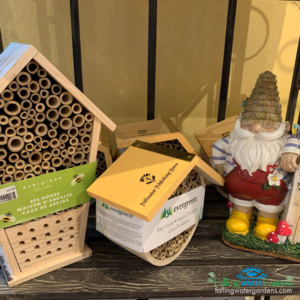 Your Bee Houses
Your Bee Houses
It is recommended to use attractants with your cocoons, as it may attract more bees to your home. When it is about 50°F outside in your local area, you may release your bees, and place Mason Bee Houses in an area near the spaces you want pollinated and leave enough room above the tubes.
Mason Bees love morning sunshine, so you should look for an east or south facing spot. Mason Bees are significantly more effective at pollinating a garden than the fabulous Bumble or Honeybees. Unlike the Honey or the Bumble bee, Mason Bees do not have a hive, so all pollen they collect stays in their possession. A fence or wall or side of a building is good. Avoid a spot under a swaying branch since the bees don’t like dappled shade. Your spot should be well above ground.
Getting Started in your Mason Bees
You can purchase your Mason Bee Kits now in the gift shop come visit!
Gift Shop Goodies!
We new inventory coming in virtually daily, here are some items that we currently have! May we suggest Mason Bee Kits? Mason Bees help support a healthy pollination in your garden, and they are easy to work with!


